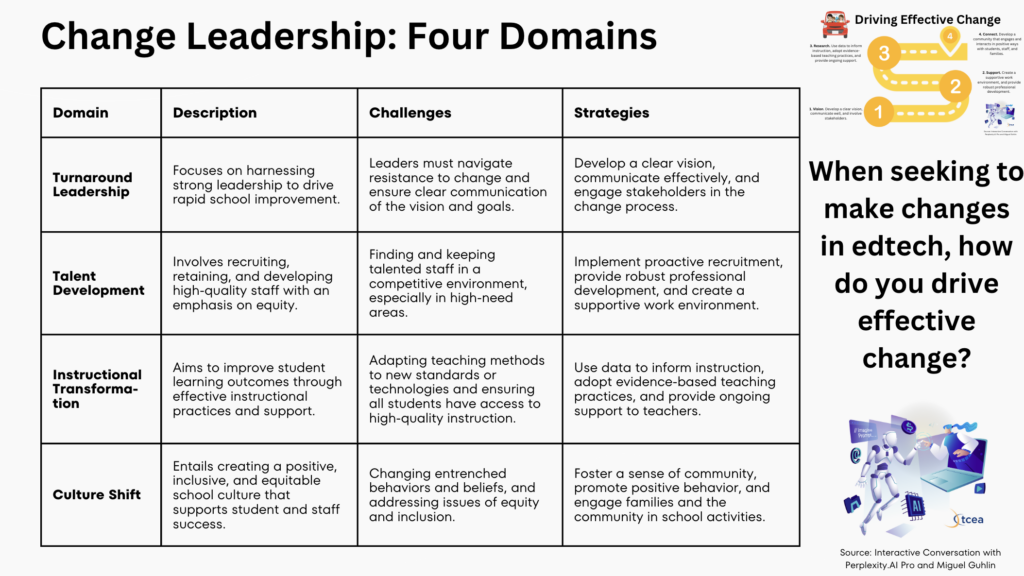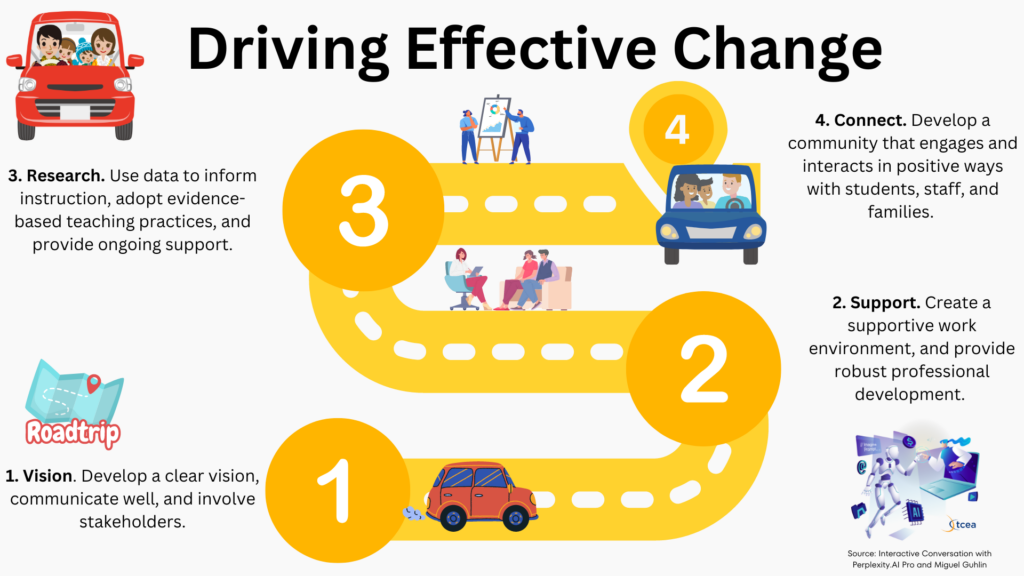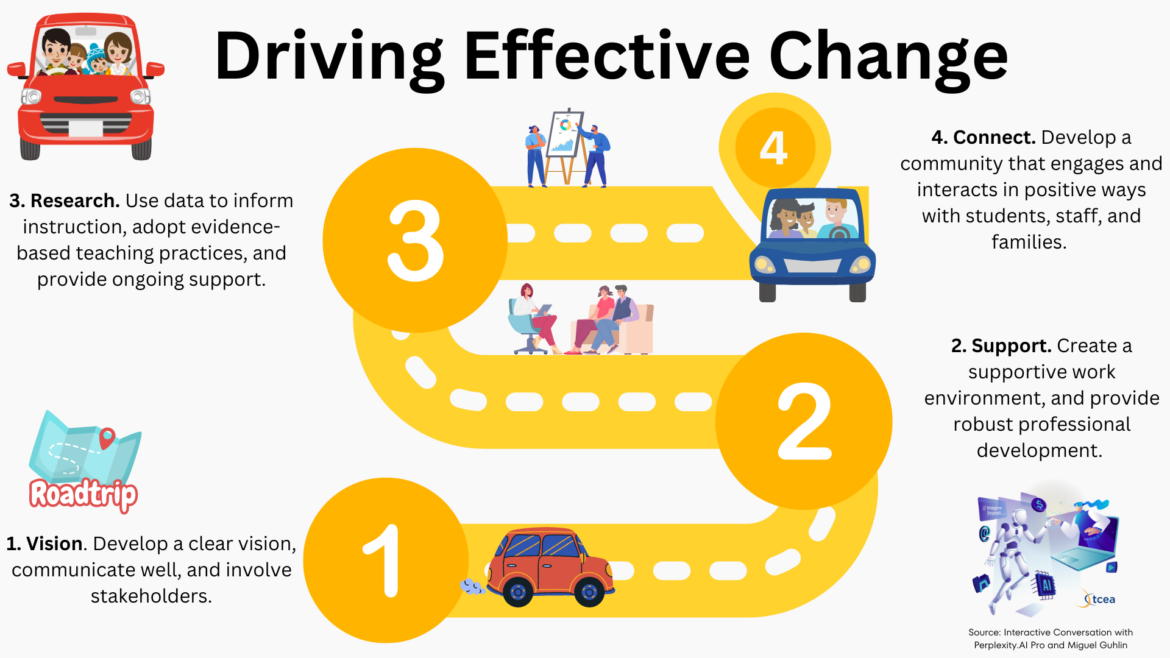“I lost my job today,” Emil said as he walked into our meeting. It was the monthly Campus Technology Representatives (CTR) Meeting. Emil was a campus instructional technologist (CIT) whose role was driving effective change and actively promoting instructional uses of technology. He had succeeded in being an instrument for change. But, change is not always welcome. How can you drive effective change without alienating the people you want to see change? It’s a tough question.
The Four Domains of Effective Change
As a technology director, my biggest challenge involved navigating the political dimension. The question wasn’t, “How do I get superintendent approval for a new technology?” Rather, it was, “How do I get classroom teachers and principals to change what they do every day?” If only I had enjoyed a longer perspective, such as the one captured in this chart, the result of interactive prompt engineering with an AI model.

In my experience, these four domains are critical to consider. Without them, no change is successful. Successful change is change that endures for the long term— which is change that works, endures, and is effective.
An Example of Driving Effective Change
To drive effective change, imagine how the four domains might translate into a roadmap. This roadmap gives us a path forward. While one might have the research and the evidence, planning a joint journey forward is where it’s at. I imagine this as a parent trying to get all the kids in the car for a long trip.

In the following scenario adapted from a real situation, a problem emerges. The challenge is one many small school technology directors face. How would you handle it?
The Scenario
At St. John’s campus, a new plan aims to lower teacher stress by cutting their class load from six to five. This move seeks to boost teacher happiness and satisfaction without hiring more staff. The idea is to spread teaching tasks around, including to those not usually teaching. The campus instructional technologist (CIT), who is key to digital learning, faces added teaching duties. This shift worries several staff. They recall when this mix led to burnout and turnover. How can this change work? Is it possible to stop it or speed up?
The Driving Effective Change model offers some suggestions:
1. Vision
Set a clear goal to cut teacher workloads. Talk with everyone involved—teachers, staff, and families—to get their support. Action: Share stories on why instructional technologists are key. They help teachers use tech without stress, keeping work manageable and preventing burnout.
2. Support
Value the instructional technologist role in tangible ways. Action: Push for funding to keep this role. Show how it improves teaching and helps students. Collect and use metrics if possible.
3. Research
Use data to pick teaching methods and tech that meet standards. Make evidence-based teaching normal. Action: Change old ways with digital tools for better teaching. Offer ongoing training to help teachers adapt.
4. Connect
Build a community that embraces tech in teaching. Make sure students, staff, and families feel included and important. Action: Get everyone involved in updating teaching methods. Share how tech changes teaching and learning for the better. Enlist students and staff to tell their stories.
Reflection
If Emil had the support of such a structured process, his job might have been secure. More importantly, the whole campus would have benefited. Looking back, I see there was more I could have done for his success. His team would have enjoyed better, data-informed teaching methods paired with digital tools, and the students would have benefited from improved learning. What’s more, a community of leaders could have grown. See the application of Driving Effective Change Model to Emil’s situation.

